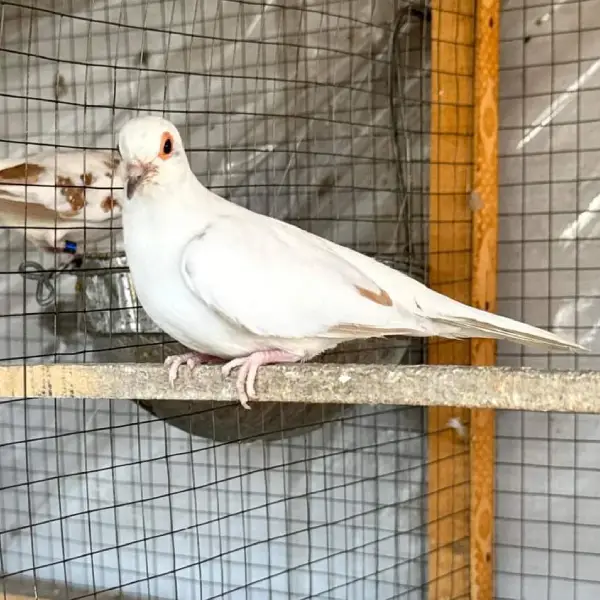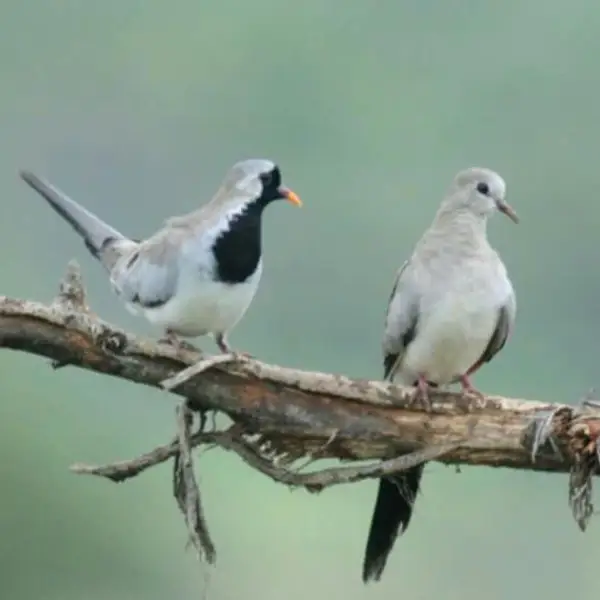Free shipping order over 20,000
Common Bengalese
₨ 875 Original price was: ₨ 875.₨ 700Current price is: ₨ 700.
- Scientific Name: Lonchura striata
- Size: About 11-12 cm (4.3-4.7 inches) in length.
- Color:
- Body: Generally brownish with a slightly streaked appearance. The coloration can vary depending on the specific subspecies and domesticated varieties.
- Head: The head is often a slightly darker shade than the body, with some variations showing a pale or white face.
- Wings: The wings are a mix of brown and gray with subtle streaking.
- Tail: The tail feathers are short and often show a darker brown or blackish hue.
- Beak: Short, conical, and well-adapted for seed eating, usually reddish or orange in color.
- Legs and Feet: Typically brown or pinkish.
Share
Share on facebook
Share on email
Important Keys:
Habitat:
- Distribution: Native to the Indian subcontinent, including India, Bangladesh, Nepal, and Pakistan. It is also found in parts of Myanmar and Sri Lanka.
- Environment: Prefers open grassy areas, agricultural lands, and areas with dense vegetation. It often adapts well to urban and suburban environments.
Diet:
- Primary Food: Seeds, grains, and occasionally small insects. In captivity, they are often fed a mix of millet, canary seed, and other small seeds.
- Feeding Behavior: Forages on the ground and in grassy areas, often in small flocks. It pecks at seeds and sometimes forages for insects.
Breeding:
- Nesting: Builds nests in shrubs, grasses, or sometimes in the eaves of buildings. The nest is typically a rounded, enclosed structure made from grasses, leaves, and other plant materials.
- Egg Quantity: Lays 4-6 eggs per clutch.
- Incubation Period: About 12-14 days.
- Fledging: Chicks fledge around 18-21 days after hatching.
Lifespan:
- In the Wild: Typically around 5-7 years.
- In Captivity: Can live up to 10 years or more with proper care and a balanced diet.
Behavior:
- Social Structure: Highly social and often seen in flocks. The Common Bengalese is friendly and active, and it is known for its playful and interactive behavior.
- Vocalization: Produces a variety of chirps and calls. The vocalizations are less melodious compared to other finches but are distinctive and serve as communication within flocks and during mating rituals.
Additional Information:
- The Common Bengalese is popular in aviculture due to its pleasant demeanor and adaptability to captivity. In domesticated settings, various color mutations exist, including white, black, and pastel variations.
![]()
Be the first to review “Common Bengalese” Cancel reply
Related Products
-
-70%
Zebra Finch
₨ 5,000Original price was: ₨ 5,000.₨ 1,500Current price is: ₨ 1,500. -
-14%
Green Star Finch
₨ 17,500Original price was: ₨ 17,500.₨ 15,000Current price is: ₨ 15,000. -
-25%
Silver Gouldian Finch
₨ 24,000Original price was: ₨ 24,000.₨ 18,000Current price is: ₨ 18,000. -
-20%
Lotino Gouldian Finch
₨ 15,000Original price was: ₨ 15,000.₨ 12,000Current price is: ₨ 12,000. -
-21%
Euro Bengalese
₨ 3,800Original price was: ₨ 3,800.₨ 3,000Current price is: ₨ 3,000. -
-40%
Red Pied Dove
₨ 10,000Original price was: ₨ 10,000.₨ 6,000Current price is: ₨ 6,000. -
-20%
Diamond Pied Dove
₨ 6,250Original price was: ₨ 6,250.₨ 5,000Current price is: ₨ 5,000. -
-20%
Cape Dove
₨ 37,500Original price was: ₨ 37,500.₨ 30,000Current price is: ₨ 30,000.
Sign Up for Exclusive Birds Care Tips and Offers from Phool Panchi
Company links
Category
Contact
© 2024 Phool Panchi | Developed By v3Studio






.jpg)








Reviews
There are no reviews yet.